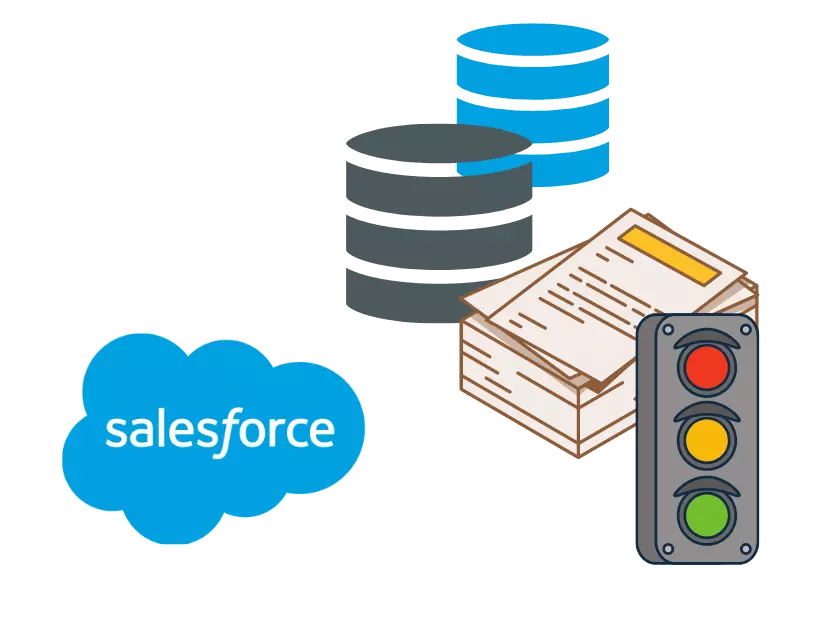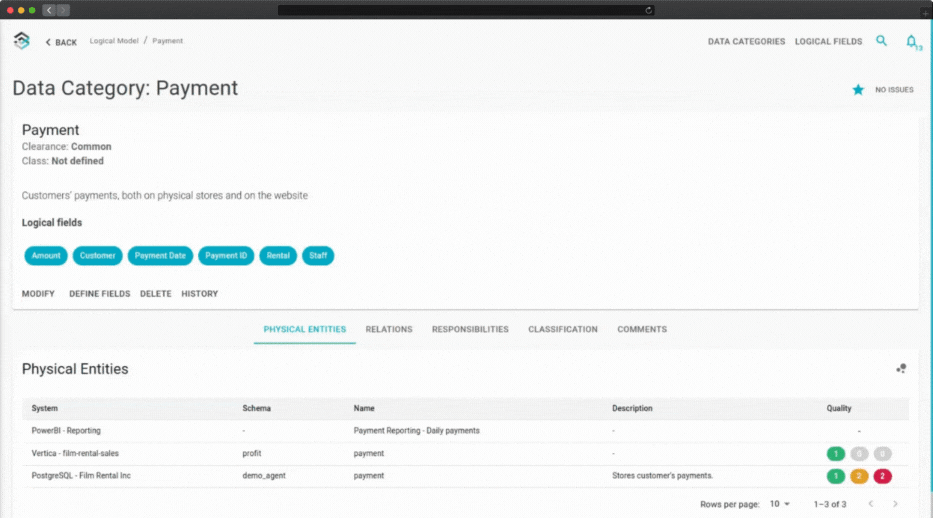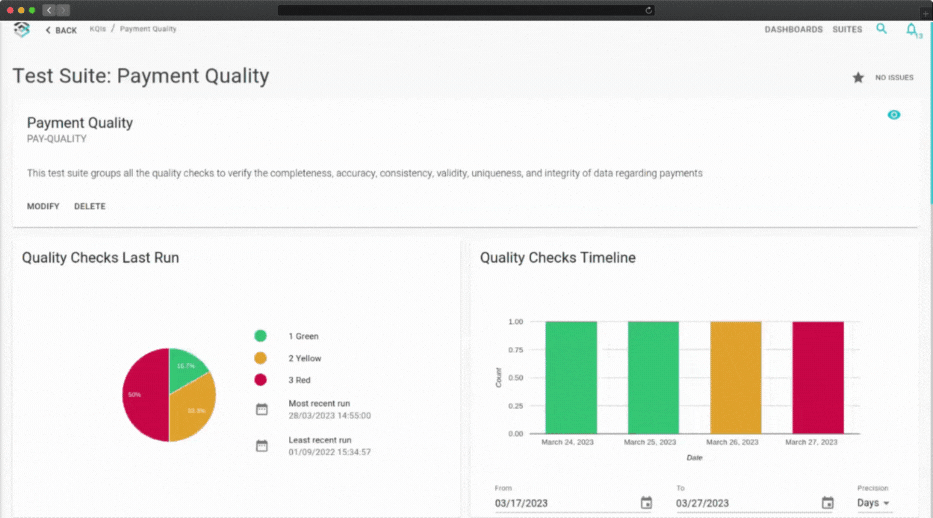Introduction
Salesforce is one of the most popular and powerful cloud platforms for customer relationship management (CRM) and business operations. However, managing and ensuring the quality of Salesforce data can be challenging, especially when it comes to metadata, data constraints and data integration. That’s why we are excited to introduce the Blindata connector for Salesforce, a feature that allows you to easily crawl, catalog and query your Salesforce data within Blindata’s governance solutions.
In this blog post, we will show you how the Blindata connector for Salesforce can help you improve your Salesforce metadata and data quality in two ways: by automatically ingesting and displaying your Salesforce data models and constraints, and by enabling you to perform data quality checks on your Salesforce data and its copies in your data warehouse.
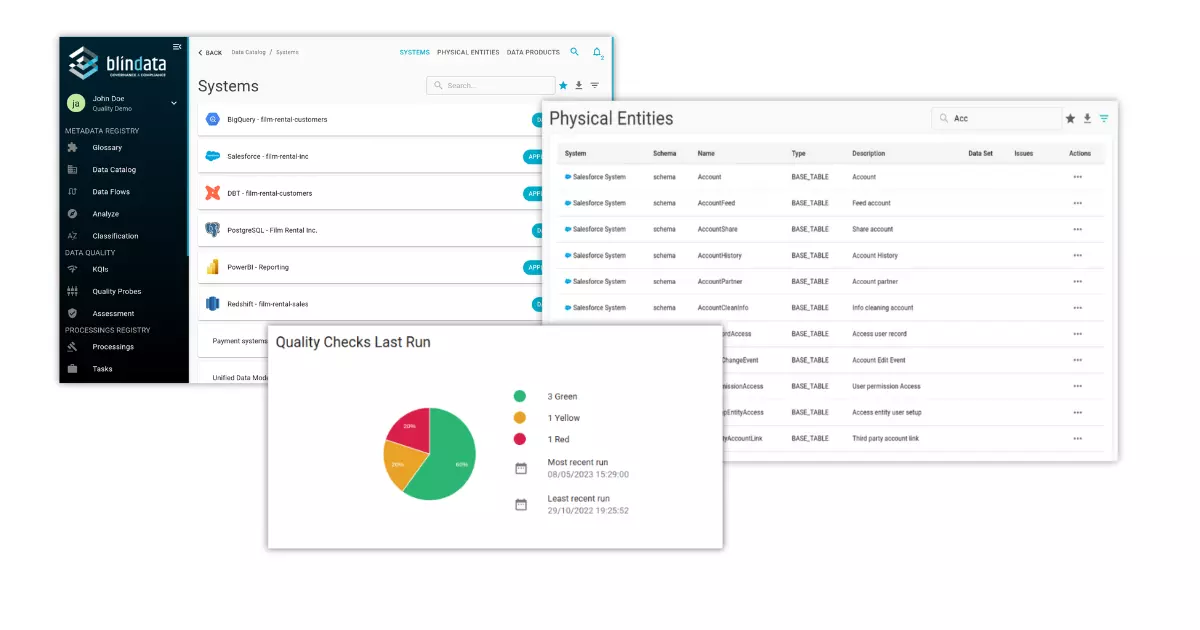
Metadata
Crawling
One of the challenges of working with Salesforce data is that it can be difficult to understand the structure and relationships of your data objects, especially if you have a large and complex Salesforce schema.
The Blindata connector for Salesforce solves this problem by automatically crawling your Salesforce models and ingesting them into the Blindata data catalog. This way, you can easily access and explore your Salesforce metadata, such as object names, fields, types, descriptions, labels and annotations. You can also see the dependencies and references between your objects, such as primary keys, foreign keys, lookup fields and master-detail relationships.
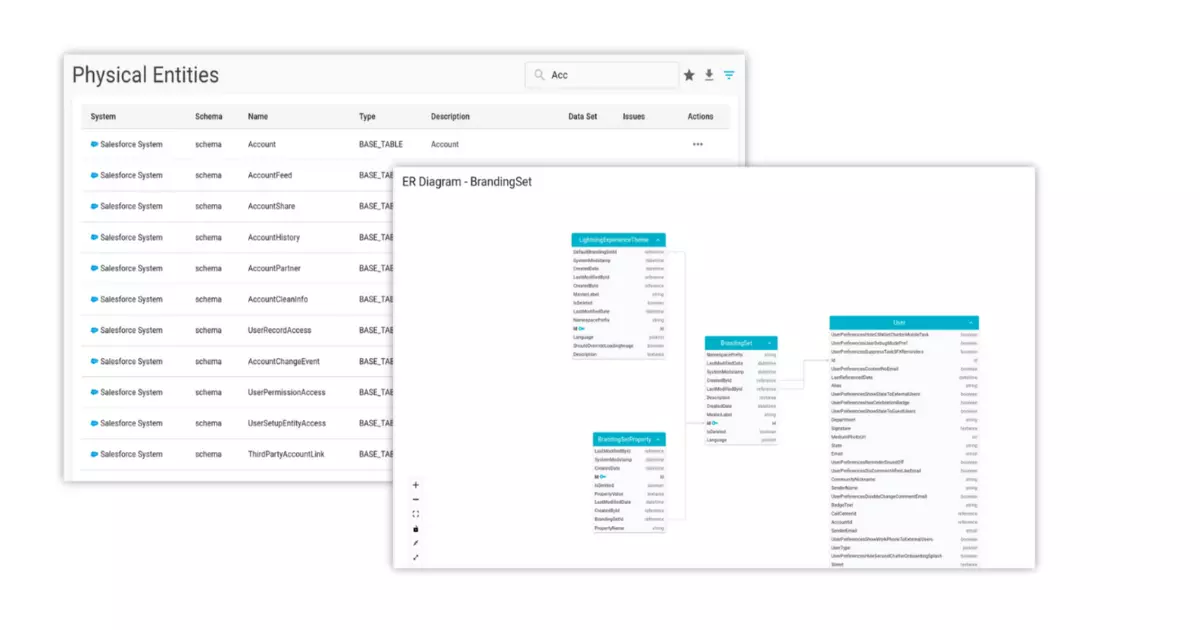
The Blindata connector for Salesforce also reconstructs the entity-relationship (ER) diagrams for your Salesforce models, so you can visualize the structure and constraints of your data graphically.
All in a unique and collaborative enterprise data catalog.
Data Quality
on Salesforce
Another challenge of working with Salesforce data is errors and inconsistencies. This is especially the case when a large part of data is collected manually or when you integrate Salesforce with other sources or when you copy and transform Salesforce data within your data warehouse. For example, you may have duplicate records, missing values, invalid formats or outdated information.
The Blindata connector for Salesforce helps you prevent and detect these issues by enabling the data quality module of Blindata to make queries directly on your Salesforce data. This way, you can define and run data quality rules on your Salesforce data, such as completeness, uniqueness, validity, timeliness and consistency. You can also compare your Salesforce data with its copies in your data warehouse, such as Snowflake or BigQuery, to ensure that they are aligned and synchronized.
Blindata also provides you with dashboards and reports to monitor and track the results of your data quality checks, so you can identify and resolve any problems quickly and easily.

